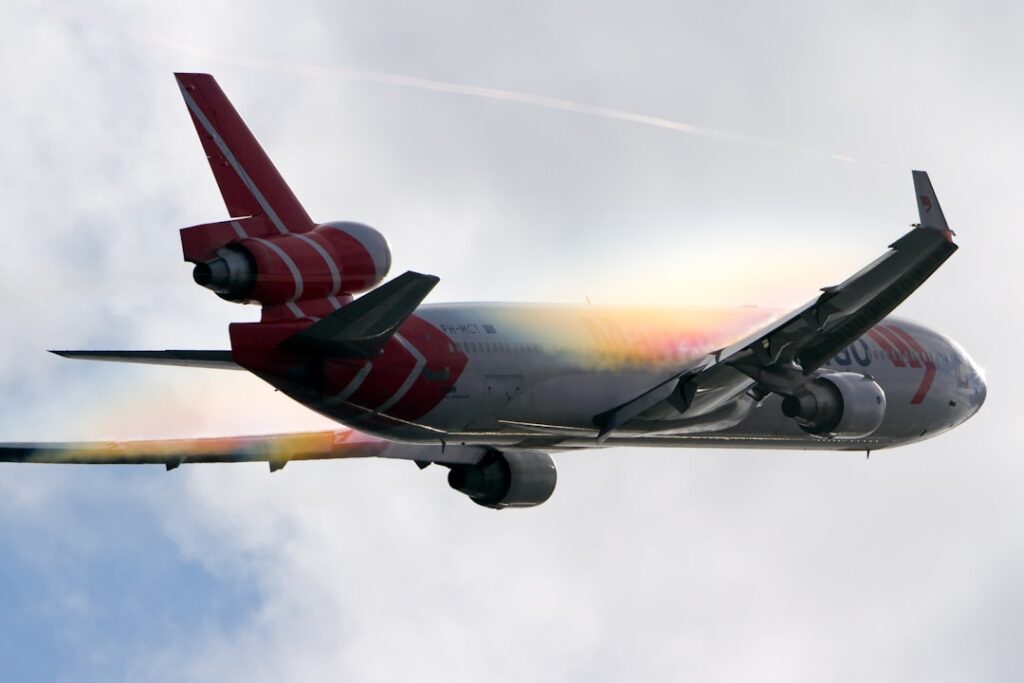Flight shaming is a social movement that encourages individuals to reconsider their air travel habits due to the environmental consequences associated with flying. This phenomenon has gained traction in recent years, particularly among environmentally conscious travelers who are increasingly aware of the carbon emissions produced by airplanes. The term itself encapsulates a growing sentiment that flying, once seen as a convenient mode of transportation, is now viewed as an environmentally irresponsible choice.
Advocates of flight shaming argue that the aviation industry contributes significantly to climate change, and they urge people to think twice before booking flights for leisure or non-essential travel. The movement has sparked discussions about personal responsibility and collective action in the face of climate change. It challenges the notion that air travel is a right or a necessity, instead framing it as a privilege that comes with environmental costs.
As more individuals embrace this mindset, flight shaming has evolved into a broader critique of consumer culture and its impact on the planet. The movement encourages people to reflect on their travel choices and consider the implications of their actions on future generations.
Key Takeaways
- Flight shaming is a movement that aims to raise awareness about the environmental impact of air travel and encourage individuals to consider alternative modes of transportation.
- Air travel contributes significantly to carbon emissions and climate change, making it a target for environmental activists and flight shaming proponents.
- The flight shaming movement originated in Sweden in 2017 and has since gained traction globally, with prominent figures like Greta Thunberg advocating for reduced air travel.
- Alternatives to air travel, such as train and bus transportation, are being promoted as more sustainable options by the flight shaming movement.
- Flight shaming has the potential to impact the travel industry, as individuals and governments may seek to reduce air travel and implement policies to mitigate its environmental impact.
The Environmental Impact of Air Travel
Air travel is one of the fastest-growing sources of greenhouse gas emissions, contributing significantly to global warming. According to various studies, aviation accounts for approximately 2-3% of global carbon dioxide emissions, a figure that is expected to rise as air travel becomes more accessible to a larger population. The combustion of jet fuel releases not only carbon dioxide but also other harmful pollutants, such as nitrogen oxides and particulate matter, which can have detrimental effects on air quality and public health.
The environmental impact of flying extends beyond just emissions; it also includes noise pollution and the ecological disruption caused by airport expansions and infrastructure development. Moreover, the carbon footprint of air travel is disproportionately high compared to other forms of transportation. For instance, a round-trip flight from New York to London can produce as much carbon dioxide as an entire year’s worth of driving for an average car owner.
This stark contrast has led many environmentalists to advocate for reduced air travel as a means of combating climate change. The urgency of addressing these issues has prompted calls for more sustainable practices within the aviation industry, including the development of greener technologies and alternative fuels.
The Origins of Flight Shaming

The flight shaming movement can trace its roots back to Sweden, where it gained momentum in 2018 following a series of high-profile climate events and discussions surrounding climate change. The term “flygskam,” which translates to “flight shame,” was coined by Swedish activists who sought to raise awareness about the environmental impact of flying. This grassroots movement quickly resonated with individuals across Europe and beyond, leading to a broader conversation about sustainable travel practices.
The rise of flight shaming coincided with increased media coverage of climate change, particularly in light of reports from organizations like the Intergovernmental Panel on Climate Change (IPCC) that highlighted the urgent need for action. As the movement spread, it began to influence public opinion and behavior regarding air travel. Many people started to feel guilty about their flying habits, leading to a noticeable decline in domestic flights in Sweden and other countries where flight shaming took hold.
This cultural shift marked a significant turning point in how society views air travel, transforming it from a commonplace activity into one that requires careful consideration of its environmental implications.
Prominent Figures in the Flight Shaming Movement
| Name | Role | Contribution |
|---|---|---|
| Greta Thunberg | Activist | Raised awareness about the environmental impact of air travel |
| George Monbiot | Journalist | Advocated for reduced air travel and promoted alternative transportation |
| Anna Hughes | Author | Wrote about the impact of air travel on the environment and encouraged sustainable travel |
Several prominent figures have emerged as advocates for flight shaming, using their platforms to raise awareness about the environmental impact of air travel. One notable figure is Greta Thunberg, the young Swedish climate activist who gained international recognition for her passionate speeches and advocacy work. Thunberg’s decision to travel by train instead of flying to various climate conferences has inspired many to reconsider their own travel choices.
Her commitment to reducing her carbon footprint has made her a symbol of the flight shaming movement, encouraging others to follow suit. In addition to Thunberg, various environmental organizations and activists have played crucial roles in promoting flight shaming. Groups like Greenpeace and Extinction Rebellion have utilized social media campaigns and public demonstrations to highlight the environmental costs of flying.
These organizations have successfully mobilized public sentiment against excessive air travel, urging individuals and corporations alike to adopt more sustainable practices. Their efforts have contributed to a growing awareness of the need for systemic change within the aviation industry.
Alternatives to Air Travel
As flight shaming continues to gain traction, many travelers are exploring alternatives to air travel that are more environmentally friendly. One popular option is train travel, which is often seen as a more sustainable mode of transportation. Trains produce significantly lower emissions per passenger compared to airplanes, making them an attractive choice for those looking to reduce their carbon footprint.
In regions like Europe and parts of Asia, extensive rail networks provide convenient and efficient alternatives for both short and long-distance journeys. Additionally, some travelers are opting for road trips or carpooling as viable alternatives to flying. While cars do produce emissions, sharing rides with others can help mitigate individual carbon footprints.
Furthermore, electric vehicles are becoming increasingly popular, offering a greener option for those who prefer road travel. Biking and walking are also gaining traction as eco-friendly ways to explore local destinations, allowing travelers to connect with their surroundings while minimizing their environmental impact.
The Impact of Flight Shaming on the Travel Industry

The rise of flight shaming has prompted significant changes within the travel industry as companies adapt to shifting consumer preferences. Airlines are beginning to recognize the importance of sustainability in their operations, leading many to invest in greener technologies and practices. Some airlines have introduced carbon offset programs that allow passengers to contribute towards projects aimed at reducing greenhouse gas emissions.
Others are exploring alternative fuels and more efficient aircraft designs in an effort to minimize their environmental impact. Moreover, travel agencies and tour operators are increasingly promoting eco-friendly travel options in response to consumer demand for sustainable experiences. This shift has led to a rise in eco-tourism, where travelers seek out destinations and activities that prioritize environmental conservation and responsible practices.
As flight shaming continues to influence public perception, it is likely that the travel industry will further evolve to meet the expectations of environmentally conscious consumers.
The Role of Social Media in Spreading Flight Shaming
Social media has played a pivotal role in amplifying the message of flight shaming and fostering a sense of community among advocates. Platforms like Twitter, Instagram, and Facebook have allowed individuals to share their experiences and opinions on air travel’s environmental impact, creating a global dialogue around the issue. Hashtags such as #flightshame and #flygskam have gained traction, enabling users to connect with like-minded individuals and share tips on sustainable travel practices.
Influencers and activists have also leveraged social media to raise awareness about flight shaming, using their platforms to educate followers about the consequences of air travel. Viral posts highlighting the carbon footprint of flying have sparked conversations among users, prompting many to reconsider their own travel habits. As social media continues to shape public discourse, it is likely that flight shaming will remain a prominent topic within environmental discussions.
Government Policies and Flight Shaming
Governments around the world are beginning to take notice of the flight shaming movement and its implications for policy-making in the aviation sector. Some countries have implemented measures aimed at reducing air travel emissions, such as increasing taxes on flights or promoting alternative transportation options like trains. In Sweden, for example, there has been discussion about introducing a tax on domestic flights as part of broader efforts to combat climate change.
Additionally, international organizations are exploring ways to address aviation emissions on a global scale. The International Civil Aviation Organization (ICAO) has established initiatives aimed at improving fuel efficiency and reducing greenhouse gas emissions from aircraft. However, critics argue that these measures may not be sufficient given the urgency of the climate crisis.
As public pressure mounts due to flight shaming, it is likely that governments will be compelled to take more decisive action in regulating the aviation industry.
The Future of Air Travel in the Age of Flight Shaming
The future of air travel is poised for transformation as flight shaming continues to influence societal attitudes toward flying. While air travel is unlikely to disappear entirely, there may be a shift toward more sustainable practices within the industry. Innovations in technology could lead to greener aircraft designs and alternative fuels that significantly reduce emissions.
Additionally, airlines may increasingly prioritize transparency regarding their environmental impact, allowing consumers to make informed choices about their travel options. Moreover, as awareness grows around the environmental costs associated with flying, travelers may become more selective about when and how they choose to fly. This could result in a decline in short-haul flights as individuals opt for more sustainable alternatives like trains or buses for shorter distances.
Ultimately, the aviation industry will need to adapt to this changing landscape by embracing sustainability as a core principle in its operations.
How Individuals Can Reduce Their Carbon Footprint from Air Travel
Individuals looking to reduce their carbon footprint from air travel can take several practical steps beyond simply avoiding flights altogether. One effective approach is to prioritize direct flights over layovers whenever possible; takeoffs and landings contribute significantly to an aircraft’s overall emissions. Additionally, travelers can consider booking flights with airlines that have made commitments to sustainability or participate in carbon offset programs.
Another way individuals can minimize their impact is by choosing alternative modes of transportation for shorter trips or vacations closer to home. Embracing local tourism not only reduces emissions but also supports local economies and fosters a deeper connection with one’s surroundings. By making conscious choices about when and how they travel, individuals can play an active role in addressing climate change while still enjoying the benefits of exploration.
The Global Reach of Flight Shaming and Its Potential Effects
Flight shaming has transcended borders, resonating with individuals across various cultures and regions worldwide. As awareness grows about the environmental impact of air travel, this movement has the potential to reshape global attitudes toward flying and sustainability. Countries that have embraced flight shaming may serve as models for others looking to address similar issues within their own contexts.
The potential effects of flight shaming extend beyond individual behavior; they could influence international policies regarding aviation emissions and sustainability practices within the industry as a whole. As more people advocate for responsible travel choices, there may be increased pressure on governments and corporations alike to prioritize environmental considerations in their decision-making processes. Ultimately, flight shaming represents not just a critique of air travel but also an opportunity for collective action toward a more sustainable future for all.
FAQs
What is flight shaming?
Flight shaming, also known as flygskam in Swedish, is a movement that encourages individuals to feel guilty or ashamed about the environmental impact of flying, particularly in the context of climate change.
Why has flight shaming gained attention?
Flight shaming has gained attention due to the increasing awareness of the environmental impact of air travel, including its contribution to greenhouse gas emissions and climate change. The movement has been popularized by environmental activists and public figures advocating for more sustainable travel options.
What are the environmental concerns associated with flying?
Flying contributes to greenhouse gas emissions, particularly carbon dioxide, which is a major driver of climate change. Additionally, air travel also produces other pollutants such as nitrogen oxides and particulate matter, which can have negative impacts on air quality and public health.
How does flight shaming impact the aviation industry?
Flight shaming has led to a decrease in demand for air travel in some regions, particularly for short-haul flights where alternative transportation options such as trains are available. This has prompted airlines to consider their environmental impact and explore ways to reduce emissions.
What are some alternatives to flying to reduce environmental impact?
Some alternatives to flying include using trains for short-haul journeys, carpooling, taking buses, or choosing to travel by boat for certain routes. Additionally, individuals can also consider virtual meetings or telecommuting to reduce the need for air travel.









